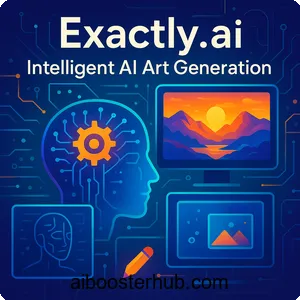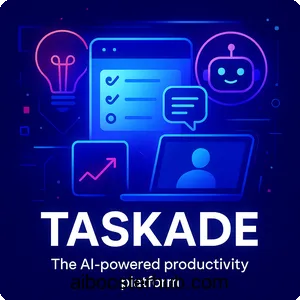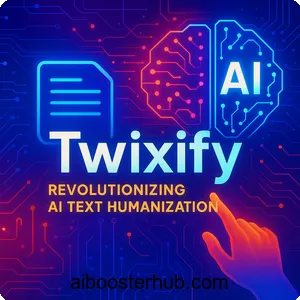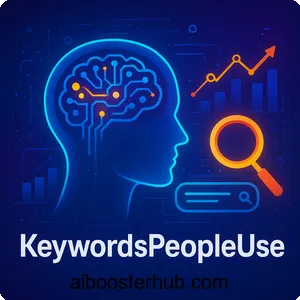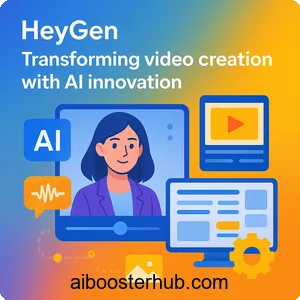AI Reviews & Ratings – Honest Tool Evaluations
For businesses, developers, and enthusiasts alike, finding the best AI tools can feel like navigating a maze. That’s where AI reviews come in—offering clear, honest evaluations to help you choose the right tools for your needs. In this comprehensive guide, we dive deep into the top AI tools available today, exploring their features, strengths, and limitations. Whether you’re seeking the most popular AI tools or curious about the best AI now, this article will provide actionable insights to inform your decisions.
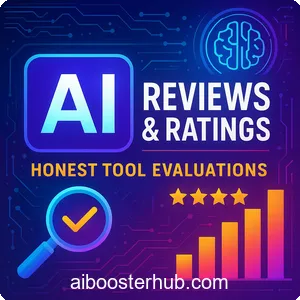
Content
Toggle1. Why AI reviews matter
Artificial intelligence is no longer a futuristic concept—it’s a practical tool transforming industries, from marketing to healthcare. But with so many options flooding the market, how do you separate the hype from the reality? AI reviews offer an unbiased lens to evaluate tools based on performance, usability, and value. They save time, reduce the risk of investing in subpar platforms, and ensure you’re leveraging the best AI tools for your goals.
Honest evaluations cut through marketing jargon, giving you a clear picture of what a tool can actually deliver. For example, some platforms excel in natural language processing, while others shine in image generation or data analysis. By reading top AI tools reviews, you can align your needs with the right technology, avoiding costly missteps. This section explores why these reviews are critical and how they empower users to make informed choices.
The challenge of choosing AI tools
The AI market is crowded, with hundreds of tools claiming to be the best. Without proper guidance, it’s easy to fall for flashy demos or overpromising ads. Reviews provide a reality check, highlighting real-world performance and user experiences. They also reveal hidden drawbacks, like steep learning curves or limited scalability, which vendors might not advertise.
How reviews guide decision-making
Well-crafted AI reviews assess tools on key metrics: functionality, ease of use, pricing, and support. They also consider niche use cases, helping you find tools tailored to specific industries or tasks. For instance, a marketer might prioritize AI for content creation, while a data scientist might need robust machine learning platforms. By focusing on these factors, reviews ensure you invest in tools that deliver measurable results.
2. What makes a tool one of the best AI tools
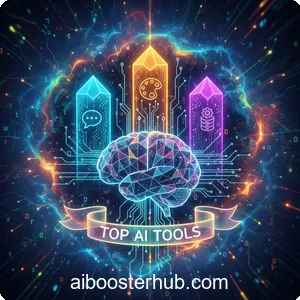
Not all AI tools are created equal. The best AI tools stand out for their innovation, reliability, and ability to solve real-world problems. But what exactly defines a top-tier AI tool? This section breaks down the core qualities that elevate a platform to the ranks of the top AI tools and why they matter to users.
Key features of top AI tools
The best AI now share several characteristics: versatility, user-friendliness, and cutting-edge technology. For example, tools like ChatGPT excel in conversational AI, while platforms like MidJourney dominate in creative image generation. These tools often integrate seamlessly with existing workflows, offer robust APIs for developers, and provide scalable solutions for businesses of all sizes.
Performance and reliability
Performance is a non-negotiable factor. The most popular AI tools consistently deliver accurate results, whether it’s generating human-like text, analyzing complex datasets, or automating repetitive tasks. Reliability also matters—downtime or inconsistent outputs can disrupt workflows, making dependability a key criterion in AI reviews.
User experience and accessibility
A tool’s interface can make or break its adoption. The best AI tools prioritize intuitive design, ensuring users—regardless of technical expertise—can harness their power. Accessibility also extends to pricing and availability, with many top tools offering free tiers or affordable plans to cater to diverse audiences.
3. Top AI tools for 2025
The AI landscape in 2025 is brimming with innovation. From generative AI to predictive analytics, the top AI tools are pushing boundaries and redefining what’s possible. Below, we highlight some of the most popular AI tools currently dominating the market, based on their performance, user feedback, and versatility.
ChatGPT by OpenAI
ChatGPT remains a titan in the AI world, known for its conversational prowess. It’s widely used for content creation, customer support, and even coding assistance. Its natural language understanding makes it a go-to for businesses and individuals alike. However, its reliance on cloud infrastructure and occasional inaccuracies are points to consider, as noted in many AI reviews.
MidJourney for creative AI
For visual content creators, MidJourney is a standout. This tool generates stunning, high-quality images from text prompts, making it a favorite for artists and marketers. Its strength lies in its artistic flexibility, though it requires a subscription for full access, which some users find limiting.
Hugging Face for developers
Hugging Face is a developer’s dream, offering open-source models for natural language processing, computer vision, and more. Its community-driven approach and extensive library make it one of the best AI tools for custom solutions. However, it demands technical expertise, which may not suit beginners.
Jasper AI for content creators
Jasper AI specializes in generating marketing copy, blog posts, and social media content. Its user-friendly interface and templates make it a top choice for content creators. While highly effective, its pricing can be steep for small businesses, a factor often highlighted in AI reviews.
4. How we evaluate AI tools
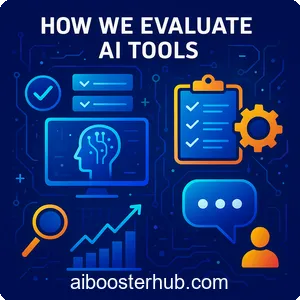
Evaluating AI tools requires a systematic approach to ensure fairness and accuracy. Our AI reviews follow a rigorous methodology, assessing tools across multiple dimensions to identify the best AI now. This section explains our evaluation process and why it matters.
Criteria for assessment
We evaluate tools based on functionality, ease of use, scalability, and cost-effectiveness. Functionality looks at what the tool can do—does it deliver on its promises? Ease of use considers the learning curve and interface design. Scalability assesses whether the tool can grow with your needs, while cost-effectiveness weighs value against price.
Real-world testing
Our reviews incorporate hands-on testing to gauge real-world performance. For example, we test generative AI tools by creating content across different scenarios, from blog posts to technical documentation. Similarly, we evaluate data analysis tools by running them on real datasets to measure accuracy and speed.
User feedback and community insights
User reviews and community discussions are invaluable. Platforms like X provide a wealth of feedback on the most popular AI tools, revealing strengths and weaknesses that might not surface in controlled tests. We analyze these insights to ensure our evaluations reflect real user experiences.
5. Challenges and limitations of AI tools
Even the best AI tools have limitations. Understanding these challenges is crucial for setting realistic expectations and choosing the right platform. This section explores common pitfalls and how to navigate them.
Accuracy and bias
AI tools can produce inaccurate or biased outputs, especially in generative models. For instance, language models may generate plausible but incorrect information, while image generators might reflect biases in their training data. Regular updates and user feedback help mitigate these issues, but they remain a concern.
Cost and accessibility
While many tools offer free tiers, advanced features often come with a premium price tag. This can be a barrier for small businesses or individual users. AI reviews often highlight cost as a deciding factor, especially for tools like Jasper AI or MidJourney, which require subscriptions for full functionality.
Learning curve and support
Some tools, like Hugging Face, require significant technical knowledge, which can deter non-expert users. Additionally, customer support varies widely—some platforms offer 24/7 assistance, while others rely on community forums. These factors can impact adoption and long-term satisfaction.
6. How to choose the best AI tool for your needs

Selecting the right AI tool depends on your goals, budget, and technical expertise. With so many options, narrowing down the top AI tools requires a strategic approach. This section offers practical tips to guide your decision.
Define your objectives
Start by identifying your primary use case. Are you looking to automate customer service, generate creative content, or analyze data? For example, ChatGPT is ideal for conversational tasks, while tools like Tableau or Power BI excel in data visualization. Clear objectives help you focus on tools that align with your needs.
Consider your budget
Budget plays a big role in tool selection. Free tools like Google’s Bard or open-source platforms like Hugging Face are great for cost-conscious users, while premium tools like Jasper AI offer advanced features for those willing to invest. Compare pricing plans to find the best AI now for your budget.
Test before committing
Many tools offer free trials or demo versions. Use these to test functionality and assess whether the tool meets your expectations. Pay attention to ease of use and integration with existing systems, as these factors can significantly impact your workflow.
7. The future of AI tools
The AI landscape is constantly evolving, with new tools and features emerging regularly. Staying ahead means keeping an eye on trends and innovations. This section explores what’s next for the most popular AI tools and how they might shape the future.
Emerging trends in AI
Generative AI continues to dominate, with advancements in multimodal models that combine text, images, and audio. Tools like DALL-E and Stable Diffusion are pushing the boundaries of creativity, while platforms like Grok 3 are enhancing conversational AI with deeper reasoning capabilities.
The role of open-source AI
Open-source platforms like Hugging Face are democratizing AI, enabling developers to build custom solutions without hefty budgets. This trend is likely to grow, making AI more accessible to small businesses and independent creators.
Ethical considerations
As AI becomes more pervasive, ethical concerns like bias, privacy, and transparency are gaining attention. Future tools will need to prioritize responsible AI practices, ensuring fairness and accountability. AI reviews will play a key role in holding developers accountable and guiding users toward ethical tools.
8. Conclusion
Navigating the world of AI tools can be daunting, but AI reviews make it easier to find the best AI tools for your needs. By evaluating platforms based on performance, usability, and value, you can confidently choose tools that drive results. Whether you’re a business owner, developer, or creative professional, the top AI tools of 2025 offer endless possibilities to innovate and grow. Stay informed, test thoroughly, and leverage the most popular AI tools to unlock the full potential of artificial intelligence.

